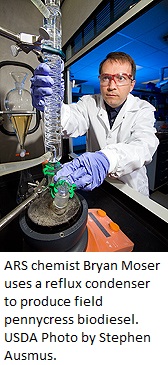Amyris is having a busy week. Yesterday, they announced a partnership with Tate and Lyle Ingredients Americas, Inc (a subsidiary of Tate and Lyle) for them to produce farnesene. Amryis will take the farnesene and produce farnesane, the company’s unique diesel molecule that forms the basis of its renewable diesel. The product will be manufactured in Tate and Lyle’s facility in Decatur, Illinois.
 Then today, the company announced even bigger news – the Environmental Protection Agency (EPA) has increased its official registration of their renewable diesel fuel, raising the registered blend level with ultra low sulfur diesel from 20 to 35 percent. To date, this is the highest blend level awarded by the EPA for commercial sale diesel fuel. The company was able to improve its registration by submitting additional fuel property data, third-party testing, engine testing conducted by major diesel engine OEMs, and highway validation tests.
Then today, the company announced even bigger news – the Environmental Protection Agency (EPA) has increased its official registration of their renewable diesel fuel, raising the registered blend level with ultra low sulfur diesel from 20 to 35 percent. To date, this is the highest blend level awarded by the EPA for commercial sale diesel fuel. The company was able to improve its registration by submitting additional fuel property data, third-party testing, engine testing conducted by major diesel engine OEMs, and highway validation tests.
Amryis was able to conduct a portion of the testing through an Integrated Bio-Refinery Program grant they received this past April from the Department of Energy.
“Obtaining the highest EPA awarded blend level registration validates the high performance properties of our renewable hydrocarbon diesel,” said Amyris CEO John Melo. “We are producing a true No Compromise fuel – a renewable diesel that eliminates the critical challenges plaguing biofuels while still enabling dramatic reductions in greenhouse gas and tail pipe emissions for vehicles, from passenger cars through heavy-duty trucks.”






 It is time to start thinking about the next
It is time to start thinking about the next 



